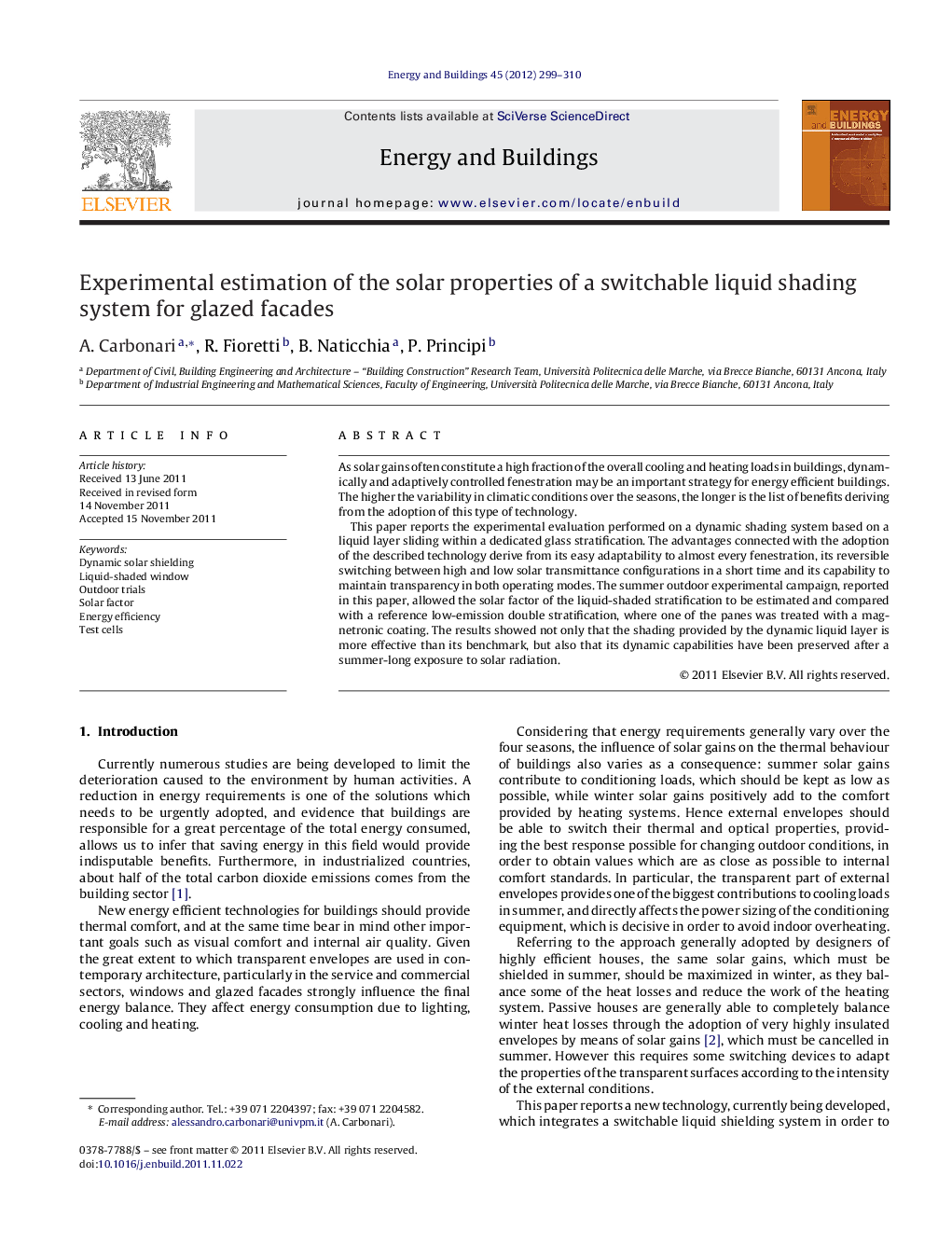| Article ID | Journal | Published Year | Pages | File Type |
|---|---|---|---|---|
| 264012 | Energy and Buildings | 2012 | 12 Pages |
As solar gains often constitute a high fraction of the overall cooling and heating loads in buildings, dynamically and adaptively controlled fenestration may be an important strategy for energy efficient buildings. The higher the variability in climatic conditions over the seasons, the longer is the list of benefits deriving from the adoption of this type of technology.This paper reports the experimental evaluation performed on a dynamic shading system based on a liquid layer sliding within a dedicated glass stratification. The advantages connected with the adoption of the described technology derive from its easy adaptability to almost every fenestration, its reversible switching between high and low solar transmittance configurations in a short time and its capability to maintain transparency in both operating modes. The summer outdoor experimental campaign, reported in this paper, allowed the solar factor of the liquid-shaded stratification to be estimated and compared with a reference low-emission double stratification, where one of the panes was treated with a magnetronic coating. The results showed not only that the shading provided by the dynamic liquid layer is more effective than its benchmark, but also that its dynamic capabilities have been preserved after a summer-long exposure to solar radiation.
► We have tested the performances of a new liquid-based shading system for windows. ► An outdoor experimental campaign was conducted to estimate the performances. ► The liquid-based stratification is more shielding than a low-e double windows. ► The liquid-based shielding resist a full-time summer-long outdoor exposure.
